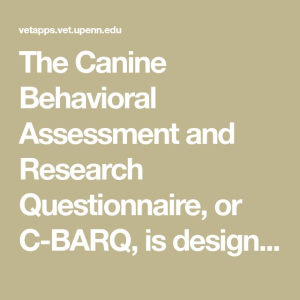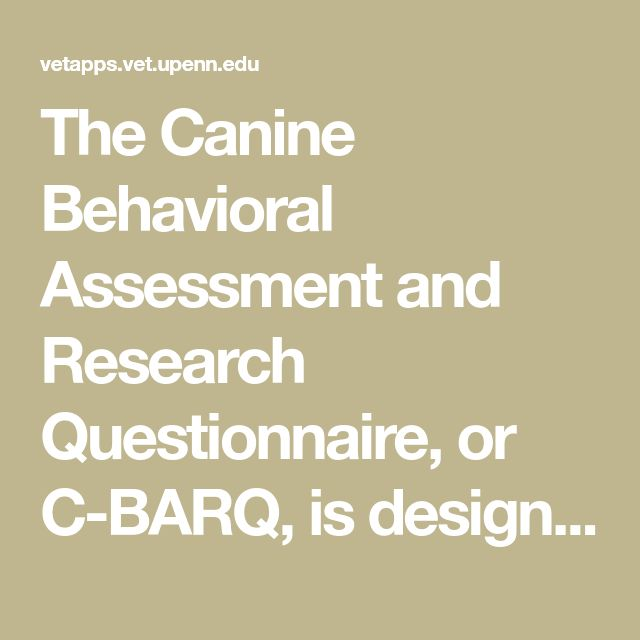Asian American women’s history is an integral yet often overlooked aspect of American history that sheds light on the varied experiences and contributions of Asian women throughout the ages. The recent Schlesinger Library exhibit, titled “Illuminate: Contextualizing Asian American Women’s Stories Through the Archives,” offers a compelling glimpse into the historical narratives of Asian women, displaying artifacts and photographs from as far back as the 1904 World’s Fair. This engaging showcase invites visitors to explore the rich tapestry of Asian American culture and the often unseen figures who played pivotal roles in it. By employing archive storytelling, the exhibition challenges viewers to rethink their assumptions surrounding the visibility and influence of Asian American women throughout history. Through this lens, we gain a deeper understanding of how these historical narratives have shaped, and continue to shape, contemporary discourse around identity and belonging.
Exploring the historical journey of Asian women in America reveals a complex narrative that intertwines various cultures and experiences. Terms like ‘Asian women in history’ and ‘historical accounts of Asian women’ deepen the understanding of how diverse backgrounds contribute to the larger fabric of American society. The efforts to unearth these stories are not just about recognizing the past; they are about reclaiming space in a dialogue that has often marginalized these voices. By examining archival materials and personal accounts, we can appreciate the significant roles these women have played in shaping communities and advocating for justice. This ongoing conversation about Asian American women’s contributions is essential to embracing a more inclusive understanding of our shared history.
The Importance of Archival Storytelling in Asian American Women’s History
Archival storytelling plays a crucial role in uncovering the narratives of marginalized groups, particularly Asian American women whose experiences have been often overlooked in historical documentation. The recent Schlesinger Library exhibit illustrates this point by featuring artifacts that challenge common perceptions of Asian women in history. By revisiting these narratives through the lens of archival materials, scholars and students alike can illuminate the rich yet largely invisible contributions of Asian American women throughout history.
The dynamic process of archival storytelling not only highlights unique individual experiences but also allows for a collective voice to emerge from the shadows. This exhibition, specifically aimed at contextualizing Asian American women’s stories, promotes awareness and appreciation for their roles in cultural, social, and political spheres. By engaging with archival materials, researchers can forge connections between past injustices and contemporary issues, ultimately fostering a deeper understanding of Asian American culture.
Unsung Heroines: Historical Narratives of Asian Women
The term ‘unsung heroines’ aptly describes the many Asian women who have shaped history without receiving the recognition they deserve. These women’s stories often reside in the margins, waiting to be excavated and shared with the world. For example, the Schlesinger Library exhibition features items that shed light on the lives of Ainu and Visayan women, whose images were captured at the 1904 St. Louis World’s Fair, yet their names remain largely anonymous. This exemplifies the broader trend of erasure prevalent in historical narratives, especially concerning Asian women.
Furthermore, historical narratives of Asian women have been shaped by societal attitudes and biases, presenting them as objects of curiosity rather than active participants in their stories. As the exhibition demonstrates, it is essential to reframe these perspectives by acknowledging their agency and contributions. This shift not only honors their legacy but also enriches our understanding of American history as a whole, revealing the interconnectedness of various cultural experiences and histories.
Rethinking Asian American Culture Through Historical Artifacts
The Schlesinger Library’s exhibition invites viewers to rethink Asian American culture through the lens of historical artifacts and documents. By featuring photographs, political posters, and zines, the exhibition not only showcases the diverse experiences of Asian American women but also encourages audiences to confront the complexities of identity and representation. Such artifacts provide insight into how Asian American culture has evolved over the years, integrating influences from both their countries of origin and their experiences in America.
Through these historical artifacts, the exhibit highlights pivotal moments that have shaped Asian American experiences, such as the Chinese Exclusion Act and Japanese American internment. It urges viewers to consider how these events have affected the narratives surrounding Asian women. By exploring the interplay of culture, history, and identity through this exhibit, attendees are encouraged to examine their own preconceptions and biases, ultimately leading to a more nuanced understanding of Asian American culture in a historical context.
Collaborative Learning: Students and Archivists Unite for History
The collaborative effort between students and archivists showcased in the Schlesinger Library exhibit exemplifies the power of joint learning experiences in uncovering historically significant narratives. As students engaged with archival materials related to Asian American women’s history, they not only enriched their knowledge but also contributed to a deeper understanding of the complexities surrounding these stories. This model of co-teaching emphasizes the importance of collaborative research in academia, fostering a sense of community and shared responsibility in documenting historically marginalized voices.
Moreover, the involvement of students in archival research enhances their educational experience by bridging theory and practice. For instance, student investigations into the past narratives of figures like Ah Fong highlight the potential for young historians to contribute new insights into their communities’ histories. This hands-on approach allows students to draw connections between historical events and contemporary issues, illustrating how the documentation of Asian American women’s stories remains relevant and necessary today.
Artistic Representations of Asian American Women’s Lives
Artistic interpretations play a vital role in bringing to life the stories of Asian American women, as seen in the commissioned artwork featured at the Schlesinger Library exhibit. By combining visual art with archival materials, the exhibit offers a multidimensional perspective on the historical experiences of these women. For instance, the translucent illustrations by artist Shaina Lu invite viewers to engage with the narratives on a deeper level, as they intersect with the tangible history documented in the archives.
The integration of artistic representations not only amplifies the emotional resonance of the stories but also reinforces the cultural significance of Asian American women’s experiences. As viewers interact with the artwork alongside the archival documents, they are encouraged to reflect on the complex layers of identity, creativity, and resilience present in these historical narratives. This artistic dialogue enriches the exhibition, positioning it as a transformative space for understanding Asian American women’s contributions to culture and society.
Visibility vs. Erasure in Asian American Women’s Histories
The dual concepts of visibility and erasure are critical in discussing Asian American women’s histories, particularly in light of the Schlesinger Library exhibit. The historical instances where Asian women were hyper-visible, like the showcased exhibits at the 1904 World’s Fair, often exemplified a troubling portrayal that reduced their identities to mere curiosities. This tendency toward commodification and spectacle aligns with broader societal narratives that have marginalized and eroded the genuine contributions of Asian American women throughout history.
Conversely, contemporary efforts to reclaim and celebrate these narratives are evident in exhibitions like ‘Illuminate.’ As scholars, students, and artists collaborate to address the gaps in documentation, they illuminate the profound impact that Asian American women have had on the cultural tapestry of America. This ongoing discourse challenges the traditional boundaries of historical narratives, advocating for a more inclusive and representative account of American history that acknowledges the complexity and richness of Asian American women’s experiences.
Engaging with Community: The Role of Local Artists
The involvement of local artists in exhibitions like the Schlesinger Library’s serves to not only enrich the narrative but also connect the history of Asian American women with the present local community. Artists, such as Shaina Lu, bring a fresh perspective that bridges artistic expression and historical reflection. Their work often resonates with the struggles and triumphs of Asian American women, fostering an environment where community members can engage with their heritage in dynamic and meaningful ways.
Moreover, local artists often draw inspiration from their own experiences, cultivating a dialogue that relates contemporary issues of Asian American culture to historical struggles. This interplay highlights the importance of understanding history as a living narrative that continues to evolve. By showcasing local artistic expressions alongside historical artifacts, exhibitions encourage a collective memory that respects the past while empowering future generations to contribute to the ongoing story of Asian American women.
Preserving Asian American Women’s Narratives in Archives
The preservation of Asian American women’s narratives in archives is an essential component of acknowledging their contributions to history. The Schlesinger Library exhibit emphasizes the importance of collecting and curating materials that reflect the diverse experiences of Asian American women, recognizing their roles in various societal contexts. Archival institutions hold the responsibility to ensure that these stories are recorded, preserved, and accessible to future generations, allowing for wider recognition and understanding.
Through the efforts of archivists and scholars, previously overlooked narratives, such as those of women seeking justice and equality, come to light. By investing in the collection and preservation of Asian American women’s archives, institutions can help rectify historical imbalances and foster a richer account of American history. This commitment to preservation not only values the individual experiences of these women but also integrates their stories into the broader narrative of American identity.
Reflections on Asian American Women’s Representation in Modern Society
In reflecting on the representation of Asian American women in modern society, it becomes evident that historical narratives significantly impact contemporary perceptions. The Schlesinger Library exhibit encourages viewers to examine how stereotypes and misconceptions shaped by historical contexts persist today. By critically engaging with the stories presented, audiences can challenge these narratives and work to dismantle the cultural biases that often hinder accurate representation.
Moreover, as Asian American women continue to navigate the complexities of societal expectations and identity, their representation in various fields—from arts to politics—becomes even more vital. By understanding the historical roots of these challenges through exhibitions like ‘Illuminate,’ we can strive towards a more equitable society that honors the diverse contributions and experiences of Asian American women. This reflection not only reaffirms their place in history but also illuminates the path for future generations.
Frequently Asked Questions
What is the significance of the Schlesinger Library exhibit on Asian American women’s history?
The Schlesinger Library exhibit titled “Illuminate: Contextualizing Asian American Women’s Stories Through the Archives” is significant as it sheds light on the often overlooked narratives and contributions of Asian American women in history. By showcasing artifacts and stories from the last 150 years, the exhibit prompts audiences to rethink mainstream historical narratives, illustrating the importance of Asian American women’s history in understanding the broader context of American history.
How does the Schlesinger Library exhibit address the issue of erasure in Asian American women’s history?
The Schlesinger Library exhibit addresses erasure in Asian American women’s history by highlighting stories that have been marginalized or overlooked. Through archival research and collaboration with students, the exhibit emphasizes the need to rediscover and honor the histories of Asian American women, including those highlighted as ‘living exhibits’ at the 1904 St. Louis World’s Fair, whose identities and contributions were largely ignored.
What kind of artifacts are included in the Schlesinger Library’s exhibit on Asian women in history?
The exhibit includes a wide range of artifacts related to Asian women in history, such as photographs, political posters, comic books, and zines. These items reflect the diverse experiences of Asian American women, contextualized against significant historical events like the Chinese Exclusion Act and the Civil Rights movement, thus enriching the understanding of their roles in American society.
How are contemporary narratives of Asian American women represented in the Schlesinger Library exhibit?
Contemporary narratives of Asian American women are represented in the exhibit through the inclusion of archival materials from influential figures such as chefs Grace Zia Chu and Madhur Jaffrey. These contemporary collections allow Asian American women to narrate their own stories, contrasting with earlier histories where they had limited avenues for self-representation.
What role do students play in the curation of the Schlesinger Library’s Asian American women’s history exhibit?
Students play a pivotal role in the curation of the exhibit as they collaborate with archivists and faculty to explore and present the stories of Asian American women. Through a course focused on Asian American women’s history, students engage in archival research, examining historical narratives and contributing their findings to the exhibition, which exemplifies a model of experiential learning.
Why is the title ‘Illuminate’ important in the context of the Schlesinger Library’s exhibit on Asian American women’s history?
The title ‘Illuminate’ is important as it signifies the exhibit’s goal to bring visibility to the hidden histories of Asian American women. It symbolizes the effort to shine a light on stories that have been obscured or neglected, fostering greater awareness and understanding of their invaluable contributions to American history.
| Key Point | Details |
|---|---|
| Exhibition Title | Illuminate: Contextualizing Asian American Women’s Stories Through the Archives |
| Exhibition Duration | Runs through January 23 at the Lia and William Poorvu Gallery of the Schlesinger Library |
| Significance of the Exhibition | Sheds light on the often-invisible histories of Asian American women through archives and artifacts |
| Historical Context | Includes narratives from the 1904 St. Louis World’s Fair to contemporary stories and issues |
| Co-Teaching Model | Developed alongside an undergraduate course involving active student involvement and research |
| Key Contributions by Asian American Women | Highlights the contributions of women like Grace Zia Chu and Madhur Jaffrey, along with historical figures like Ah Fong |
| Cultural Impact | Examines the roles Asian American women played in historical events such as the Chinese Exclusion Act and anti-Asian violence |
Summary
Asian American women’s history is an essential part of the broader narrative of American history that has been largely underrepresented. The exhibition “Illuminate: Contextualizing Asian American Women’s Stories Through the Archives” at the Schlesinger Library highlights and reexamines the important contributions and experiences of Asian American women across time. By showcasing artifacts and narratives from the past, the exhibit invites viewers to reconsider the historical context of these women’s lives, their roles in activism, and the cultural landscapes they navigated, ultimately reinforcing the significance of their stories in understanding the full scope of American history.









